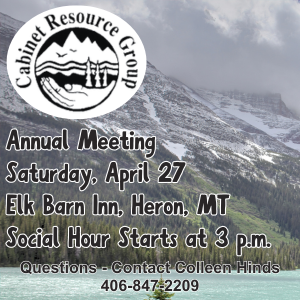A Few Thoughts
On winter and our fellow travelers
February 10, 2022
A bobcat is traveling around the homestead these days, teaching snowshoe hares and ruffed grouse to pay attention, a good and proper thing for a bobcat to do. I see its tracks rambling through my woods. I also had the good luck of a sighting a few weeks ago.
In my years in this neck of the woods, I’ve seen three bobcats, and sightings were years apart. One popped out of the woods on a summer day during my teens, scaring the bejeezus out of my first and only horse. Thunder went straight up and sideways, which scared the bejeezus out of me, as well, but I managed to hold on through his mini-rodeo.
The second was on another summer day 40 years later. Lynx rufus came tiptoeing through my yard, as if it was ready to go straight up and sideways, too, given the right stimulus.
The most recent cat came out of a snowy ditch one night and blitzed across the road in front of me just down the highway from home. I’m sure this is the same I have been following around in the woods west of my house. Watch as I might, I’ve not seen it again. But, I bet it has seen me.
I count such encounters as blessings, as I do most encounters with the wild.
The bobcat came padding past my shop last night, leaving a string of tracks in a skiff of new snow. Sometime after, a small snowshoe hare crossed the bobcat’s trail. It’s funny to imagine the hare thinking, “Neener, neener!” but it hasn’t the capacity for that. It is a wild thing with instincts developed to keep it alive as long as possible.
It is a hard time for some in late January. Current conditions are good for predators, and not so good for some of their prey. Hares, grouse and rodents are not at a distinct disadvantage, but deer and elk drop through the crust, making it hard and painful going. Moose don’t have such a struggle, as they are built for such conditions, but it still slows them down. The same snowpack is strong enough to hold up big-footed predators, including the bobcat and its catamount cousin. Coyotes and wolves can stay on top, as well. I don’t have much trouble, for that matter, even bereft of snowshoes.
Three nights ago, coyotes celebrated to the north, perhaps howling their gratitude for a deer they took. The family dogs found what little remains of it on a walk with me yesterday.
A few nights after I saw the bobcat, I stopped on that same highway to dispatch a crippled white tail doe. A car came streaking past at 70 miles an hour. My flashers were on and my headlights illuminated me and the poor, floundering critter. Unless they were blind, the driver saw very clearly what was going on there. If you are that driver, you failed your country highway duty. If it’s too much trouble to pause a moment to see what might be needed in that situation, what can you expect when real trouble begins for you? When you hit your deer — “when,” not “if” — I hope someone will stop and see if you need help, which you likely will if you hit them at 70. It’s often a long walk to cell service or the next house where we live.
It is good to live in a time and place where the drama of living wild can be read so easily. The dance is one we can appreciate but never truly understand. We have many layers of brain atop our medulla oblongata filled with memory, dreams, thoughts, opinions and plans that mask survival instincts that might compare to our wild neighbors. We are made well enough off by our intellectual powers that we don’t need to see every critter that sees us — if we use them.
But, it would also be good if we were to see more of them, particularly those who sometimes use our roads to get around in this sort of weather. For us, dodging — or hitting — a deer is most often an inconvenience. For them, a plowed road is a break from the struggle.
I’ve had my share of deer encounters of the comprehensive insurance kind, and though I don’t think any one of them was my fault, each one was my responsibility. So it is, I believe, with anyone who mortally wounds an animal with their car. I’m the one driving the 2500-pound blinding monster at a speed sufficient to kill or maim anything it hits. It is maddening and saddening to come upon a deer floundering on the road with a broken back, and abandoned by whoever hit it. I have dealt with my share, and a number of other people’s as well. Winter nights are a good time to slow down.
Sandy Compton’s books can be found at Sandpoint bookstores, the Ledger in Thompson Falls and online at bluecreekpress.com/books or (if you are in a big hurry) amazon.com.







Reader Comments(0)